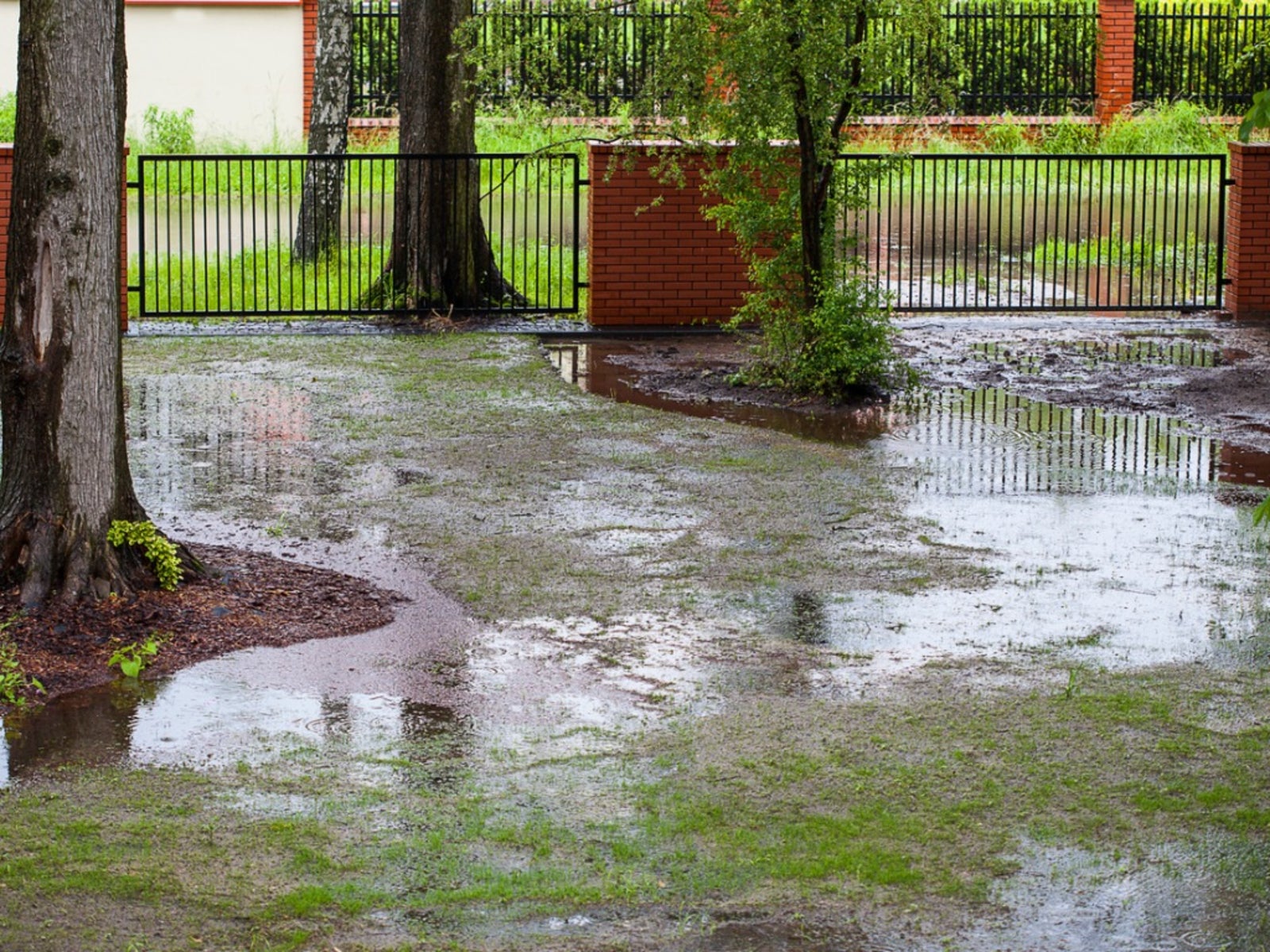Garden Drainage - How To Correct Yard Drainage Problems


Yard drainage problems can wreak havoc on a garden or lawn, especially after a heavy rain. Poor garden or lawn drainage will prevent oxygen from getting to the roots of plants, which kills the roots and also creates an environment perfect for fungus such as root rot to take hold and further damage a plant. When you take steps to improve soil drainage, you can improve the overall health of your lawn and garden.
Solutions for Yard Drainage Problems
Most minor garden and lawn drainage issues are caused by clay soil. A minor issue will be that you have standing water after a heavy rainfall for less than a day. Clay soil is more dense than sandy or loamy soil, and therefore, is slower to allow rainwater to filter through it. Minor yard drainage problems like this can usually be corrected by taking steps to improve clay soil. For more serious lawn and garden drainage problems, there are several things you can try to improve soil drainage. A more serious drainage issue means that you have standing water after light to moderate rainfall or if the standing water stays for more than a day. These drainage issues can be caused by high water tables, low grading compared to surrounding properties, layers of hard materials (like stone) below the soil and extremely compacted soil. One solution for yard drainage issues is to create an underground drain. The most common underground drain is a French drain, which is essentially a ditch that is filled with gravel and then covered over. Drainage wells are another common underground solution for compacted soil or hard sub-layers that allows the water somewhere to run after rainfall. Another way to improve soil drainage is to build up the soil where you are having the drainage issue or create a berm to redirect the water flow. This works best for garden drainage where specific beds may be getting flooded. Be aware, though, that when you build up a bed, the water will run somewhere else, which may create drainage issues elsewhere. Creating a pond or a rain garden has started to become popular as solutions for yard drainage problems. Both of these solutions not only help collect excess rainwater, but also add a lovely feature to your landscape. Rain barrels are another thing that can be added to help with drainage. Oftentimes, yards that have drainage problems not only have to deal with the rainwater that falls into the yard, but rainwater from nearby buildings as well. Rain barrels can be attached to downspouts and will collect rainwater that would normally run into the yard. This collected rainwater can then be used later when rainfall is low to water your yard. Yard drainage problems do not need to ruin your lawn or garden. When you improve soil drainage or use other solutions for yard drainage, you make it easier for your lawn and garden to grow beautiful.
Sign up for the Gardening Know How newsletter today and receive a free copy of our e-book "How to Grow Delicious Tomatoes".

Heather Rhoades founded Gardening Know How in 2007. She holds degrees from Cleveland State University and Northern Kentucky University. She is an avid gardener with a passion for community, and is a recipient of the Master Gardeners of Ohio Lifetime Achievement Award.